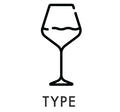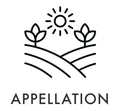Le Petit Haut Lafitte Pessac-Leognan 2019 750ml










Le Petit Haut Lafitte 2019 – a refined, organic-certified Bordeaux blend (Cabernet Sauvignon & Merlot) showing dark fruit, violets, and spicy notes of clove and white pepper. Full-bodied with firm yet polished tannins, graphite and cocoa nuances, and a long, saline finish.
James Suckling | JS 94
Published: Feb 8, 2022
Spices, such as cloves and white pepper, with violets and dark fruit follow through to a full body with firm, chewy tannins and a polished yet intense finish. Open tannins. An ash-like undertone to it. Try after 2027.
Decanter | D 92
Published: May 30, 2020
Drink: 2023-2036
Closed up on the opening bars, a little more austere than the 2018 with tight tannins but opens up to show elegance and balance, and the juicy salinity on the finish that has become so characteristic of Smith Haut Lafitte across its range of wines.
The Wine Advocate | RP 90+
Published: Apr 7, 2022
Drink: 2023-2036
More serious than the forward Les Hauts de Smith, the 2019 Le Petit Haut Lafitte contains only 40% Merlot, with the balance Cabernet Sauvignon. Exhibiting aromas of crème de cassis, sweet berries, cocoa nib, pencil shavings and loamy soil, it's medium to full-bodied, lively and concentrated, with a more structured, reserved profile but more incipient complexity too.
Certified organic with the 2019 vintage, this year marks a waypoint—rather than a stopping point—in Smith Haut Lafitte's agronomic journey. The Cathiard family banished herbicides at this address in 1991, radically reducing chemical treatments and suffering the consequences for several years in the form of much diminished yields (today, happily, materiel and techniques are more sophisticated). In addition to organic methods, cover crops have been deployed on the vineyard's central blocks and western band, where soils are less well drained. Hedges have been planted to encourage biodiversity, and ultraviolet treatments are being trialed as an alternative to copper sulfate. In addition to such initiatives, the technical team is adapting to a warmer climate: that means picking a touch earlier, certainly, but more importantly, adapting in the vineyards, with somewhat lower canopies and an end to deleafing to retain fresh, vibrant flavors. Winemaking, too, is a little gentler: cool but protracted macerations, with periodic punch-downs, for reds and whole-cluster pressing with an inerted press for whites. This has brought new structural elegance and energy to the estate's wines. It surely helps that as much as possible is done in-house: since 1995, the Cathiards have their own nursery for their own massale selections, in partnership with Bérillon, and barrels are made in the château's own on-site cooperage too, favoring the forests of Tronçais and Jupilles for reds, Loches (which brings tension) for whites. All this is symptomatic of the attention to detail and seriousness that the Cathiards, and their technical director Fabien Teitgen, have brought to this estate; and the result, in 2019, is one of the finest wines they've produced to date.

